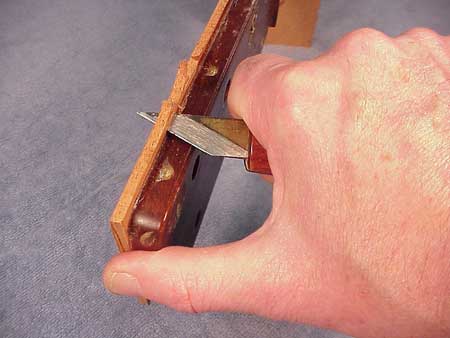The examples on this page are from the article on repairing a broken Martin D-18 peghead with a "backstrap overlay."
Here's an example of a technique that would be impossible with a hobby knife:

I have my right palm braced on the vise jaw, and I'm using it as a fulcrum as I "lever" the knife with my left hand:

I'm able to shear through 1/8" mahogany and 3/32" rosewood end grain simultaneously, while maintaining good control:

Here's another one that just doesn't work with a hobby knife:

I'm using the knife a bit like a plane or spokeshave, by laying it flat along the wide bevel, so I cut only the high spots as I slice along.
The blade is so stiff it works really well as a small scraper:

To keep from destroying my sharp edge, I use the back side, which I occasionally flatten on the stone to produce 90 degree cutting edges.
Another leverage technique:

By planting my thumb firmly at the back edge of the knife, I can generate a lot of forward cutting power as I lever the handle backward. Because my thumb is anchored to the work, and I'm using a lever action, there's literally no chance of my knife slipping forward no matter how much force I use. I can carve right up to the edge with full force.
I often use a "paring" grip:

Now, I can pull forward quite vigorously, again with really good control. Notice that my thumb is well below the line of my cut. If the piece splits, or my knife slips, it will miss my thumb by a couple of inches. This is important stuff. I remember my mother cutting carrots into the stew pot by cutting directly against her thumb. Give her a really sharp knife and she'd cut herself! (It happened once.)
More